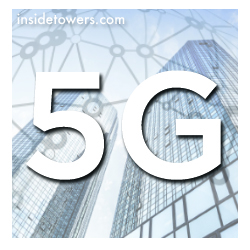5G could change the lives of millions of Americans this quarter, but it may have very little to do with the newly launched C-band spectrum. While operators Verizon and AT&T were trying to balance their C-band rollouts with safety concerns raised by the aviation industry, competitor T-Mobile announced a regional rollout that flew a bit under the radar amidst the media attention focused on the C-band launch and related flight cancellations.
The carrier is extending its 5G fixed wireless home internet service in 57 municipalities, all in Texas. Of course Dallas, Houston, San Antonio and Austin are on the list, but so are much smaller towns like Alice, Fredericksburg, Brownwood, Mount Pleasant and Lamesa. T-Mobile said people in some of these towns will be able to get home broadband for the first time, and local officials backed up that claim.
“Families across our city have been left in the dark throughout the pandemic,” said Anthony Williams, Mayor of Abilene. “With the expansion of T-Mobile Home Internet to households in our community, many of those families will have a new option to stay connected—no more sitting inside a coffee shop, visiting a library or trying to make do with only a cell phone—new home internet options mean kids and parents can now learn and work at home, an option some have never had.”
All told, T-Mobile currently offers its 5G home internet service in more than 600 cities, covering an estimated 30 million households. The carrier recently told CNET almost 10 million of those households are in rural America.
Bringing fixed wireless broadband to rural America is not a goal that’s unique to T-Mobile. Verizon is highly focused on 5G FWA, and said on its Q4 earnings call its FWA home internet business had added 78,000 net new subscribers during the quarter, bringing total subscribers to 223,000. But for now its FWA footprint is primarily urban due to the nature of its spectrum assets.
AT&T is working to address the digital divide by expanding its fiber footprint, but those projects are unlikely to extend to sparsely populated farmlands.
T-Mobile has said in the past it uses its 2.5 GHz and 600 MHz spectrum for fixed wireless. Since it has had access to these bands for well over a year, it’s ahead of competitors when it comes to homes reached by 5G fixed wireless access.
Of course the FCC is also working to extend broadband to rural areas through the Rural Digital Opportunity Fund, but none of the major wireless carriers were big winners in that reverse auction, suggesting FWA may not play a huge role in RDOF-funded deployments.
City slickers
For now, the public face of the wireless carriers typically assigned to 5G is decidedly urban, not rural. One of Verizon’s latest ads for its new 5G Ultra Wideband service shows people using 5G on subways, in coffee shops, in a city park and in a modern apartment building where a group of 20-somethings hooks up to Verizon 5G Home Internet in order to “ditch cable.”
For carriers, moving urban customers onto 5G increases network efficiency for all users, helping maintain network availability and performance. So we may see quite a few more of these types of ads. It’s fun to watch these trendy townies zip through their lives with their 5G connections, but it’s also very nice to think about how 5G is bringing some homes online for the first time.
By Martha DeGrasse, Inside Towers Contributing Analyst
Veteran telecom industry editor and journalist Martha DeGrasse is an Inside Towers Contributing Analyst. DeGrasse owns Network Builder Reports and contributes regularly to several publications. She was formerly a writer and editor with RCR Wireless and a TV business news producer.





Reader Interactions